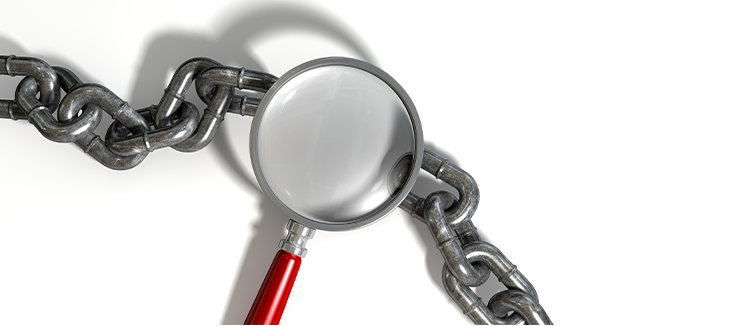Transvaginal ultrasounds have become an indispensable tool in gynecology and obstetric practices, providing critical insights into female reproductive health. However, the cleaning and disinfection of transvaginal ultrasound probes present significant challenges, given the potential for cross-contamination and infection. We have taken an in-depth look and will explore the comparative efficacy of manual versus automated cleaning protocols for transvaginal ultrasound probes, assessing which method is superior in terms of effectiveness, safety, cost, and compliance with regulatory standards.
The Importance of Proper Cleaning Protocols
The transvaginal ultrasound probe is classified as a semi-critical medical device due to its contact with mucous membranes. As such, it requires meticulous cleaning and disinfection to prevent the transmission of pathogens. The Centers for Disease Control and Prevention (CDC) guidelines emphasize that proper disinfection protocols must be adhered to minimize the risk of healthcare-associated infections (HAIs). Consequently, the choice between manual and automated cleaning methods is a critical consideration for healthcare facilities.
Manual Cleaning: Advantages and Limitations
Manual cleaning involves physical scrubbing and the application of cleaning solutions by healthcare personnel. One of the primary advantages of this method is the direct oversight it allows; trained staff can visually inspect probes for any residual contaminants and ensure that all surfaces are adequately cleaned. This hands-on approach can foster a more thorough understanding of the cleaning process and potential pitfalls, allowing for immediate corrective actions if necessary. One key weakness is that staff training must be done and maintained to ensure no gaps or inconsistencies in the cleaning outcome of each probe. Differing instructions for use (IFUs) can lead to an outcome that might jeopardize the reprocessing of an ultrasound probe.
However, manual cleaning has significant limitations. Human error is an inherent risk, as variations in technique and diligence can lead to inconsistent cleaning outcomes. Additionally, the time-consuming nature of manual cleaning can strain healthcare resources, especially in high-volume settings. Research indicates that manual cleaning may not achieve the level of disinfection required to eliminate all pathogens, particularly if the cleaning personnel are overburdened or inadequately trained.1
Automated Cleaning: Benefits and Challenges
Automated cleaning systems, such as automated cleaner disinfector units, offer a mechanized approach to cleaning transvaginal ultrasound probes. These systems utilize advanced technology to ensure consistent and thorough cleaning, minimizing the potential for human error. Automation allows for a standardized process that can be replicated across different operators, thereby increasing the reliability of disinfection outcomes. Moreover, automated cleaning systems can significantly reduce the time required for cleaning, allowing healthcare facilities to optimize workflow and improve patient throughput. Studies have shown that automated cleaning can achieve higher levels of microbial reduction compared to manual methods, addressing concerns over HAIs more effectively2.
However, the implementation of automated cleaning systems is not without challenges. The initial investment costs can be substantial, which may deter some facilities from adopting this technology. Ultimately the healthcare facility must take an all-of-operations look at the cost to incorporate automation when compared to the liability or current cost seen with manual reprocessing. It is more than just the capital investment that would be weighed as patient outcome is key.
Comparative Analysis: Which Method is Better?
When evaluating the superiority of manual versus automated cleaning of transvaginal ultrasound probes, several factors must be considered, including effectiveness, safety, cost, and compliance with regulatory standards. While manual cleaning allows for direct oversight and immediate adjustments, its inherent variability and susceptibility to human error cannot be overlooked. Conversely, automated cleaning provides a more consistent and thorough disinfection process, which is particularly crucial in high-stakes medical environments. In terms of effectiveness, studies consistently demonstrate that automated cleaning methods yield superior results in microbial reduction2. This advantage is pivotal in the context of patient safety and infection control. Additionally, the time efficiency of automated systems can enhance overall workflow in busy clinical settings, potentially leading to better patient outcomes.
From a cost perspective, while the initial investment in automated systems may be high, the long-term savings associated with reduced HAIs and improved operational efficiency would offset these costs. Furthermore, compliance with increasingly stringent regulatory standards in healthcare necessitates a robust cleaning protocol, further elevating the importance of automated cleaning solutions.
In conclusion, while both manual and automated cleaning methods have their respective advantages and limitations, the evidence suggests that automated cleaning of transvaginal ultrasound probes are the superior option in terms of effectiveness, safety, and compliance with healthcare standards. As the healthcare landscape continues to evolve, embracing technological advancements in cleaning protocols will be essential to safeguarding patient health and optimizing clinical workflows. Moving forward, healthcare facilities should prioritize the adoption of automated cleaning systems as part of their commitment to infection prevention and control.
1. Practical recommendations for routine cleaning and disinfection procedures in healthcare institutions: a narrative review. Assadian, O. et al. Journal of Hospital Infection, Volume 113, 104 – 114
2. Costa D, Castillo R, Lopes LK, Tipple A, Hu H, Vickery K. Efficacy of Double Manual Cleaning Versus Automated Cleaning for Removal of Biofilm of Hinged Surgical Instruments. Infection Control & Hospital Epidemiology. 2020;41(S1):s518-s519. doi:10.1017/ice.2020.1200


